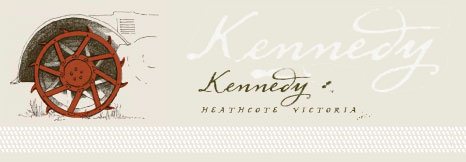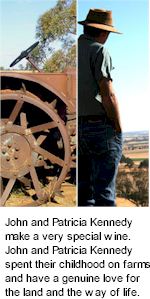


John and Patricia Kennedy spent their childhood on farms and have a genuine love for the land and the way of life. In 1981 they began wheat and sheep farming at Corop in north central Victoria. They started with basic machinery, quality soil and plenty of enthusiasm. In 1982 the Kennedys ventured into growing tomatoes. The fact that they had no experience in this form of horticulture was given only passing concern. In 2001, while still growing tomatoes and cereals, they decided to acquire land on the Mount Camel Range. This land has been prized for cereal cropping and in later years much sought after for grape production.

They planted their first ten hectares of Shiraz vines in 2002. Another 10 hectares were planted in 2003 followed by a further planting in 2007. The first vintage was produced in 2005. The Kennedys were thrilled with the quality of the wine and with the feedback. They considered themselves lucky to have many helpful neighbours and have employed vineyard, wine production and marketing experts including the noted winemaker Sandro Mosele.
The Mount Camel Range is a ridge which marks the Heathcote fault that runs through Central Victoria. It comprises Cambrian volcanic rock, which is predominantly Greenstone. This rock has weathered to produce fertile red soil with good drainage properties. This together with the elevation, east facing aspect, moderate temperatures and rainfall (backed up by irrigation if required), achieves the production of high quality grapes.
John and Patricia Kennedy make a very special wine. The Kennedy property was carefully chosen and the viticulture is tailored to growing fruit that is flavoursome, structured and balanced, to be gently crafted into wine. Work in the vineyard is focused on unravelling the intricate differences within the site. Pruning has been carefully undertaken to produce vines which are balanced to evenly ripen the crop load.
























